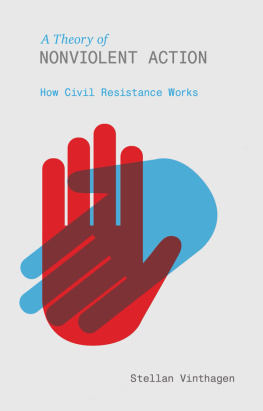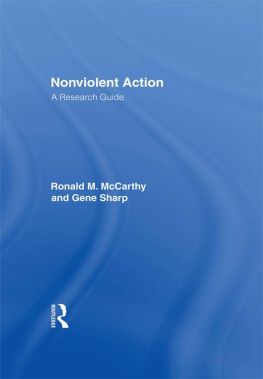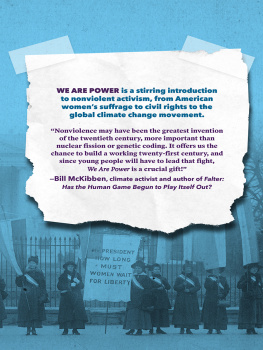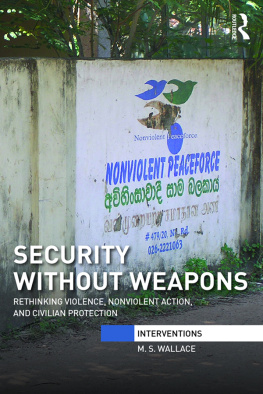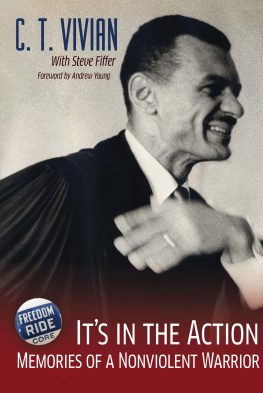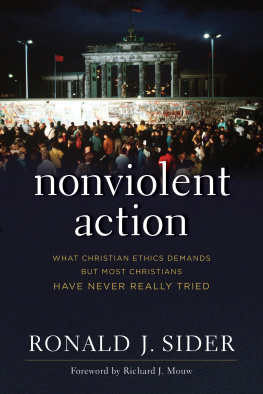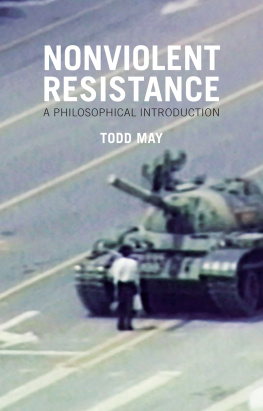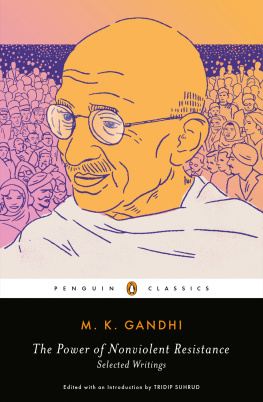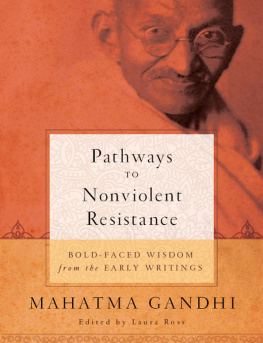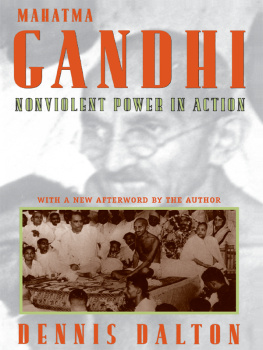
About the author
Stellan Vinthagen is Inaugural Endowed Chair in the Study of Nonviolent Direct Action and Civil Resistance and professor of sociology at the University of Massachusetts, Amherst. He is also a council member of War Resisters International, academic adviser to the International Center on Nonviolent Conflict (ICNC), co-founder of the Resistance Studies Network (www.resistancestudies.org) and editor of the Journal of Resistance Studies . Since 1980, he has been an educator, organiser and activist and has participated in more than thirty nonviolent civil disobedience actions, for which he has served in total more than one year in prison.
A THEORY OF NONVIOLENT ACTION
HOW CIVIL RESISTANCE WORKS
Stellan Vinthagen

A Theory of Nonviolent Action: How civil resistance works was first published in 2015 by Zed Books Ltd, Unit 2.8 The Foundry, 17 Oval Way, London SE 11 5 RR, UK
www.zedbooks.co.uk
Copyright Stellan Vinthagen 2015
The right of Stellan Vinthagen to be identified as the author of this work have been asserted by him in accordance with the Copyright, Designs and Patents Act, 1988
Set in Monotype Plantin and ffKievit by Ewan Smith, London
Index:
Cover designed by www.stevenmarsden.com
All rights reserved. No part of this publication may be reproduced, stored in a retrieval system or transmitted in any form or by any means, electronic, mechanical, photocopying or otherwise, without the prior permission of Zed Books Ltd.
A catalogue record for this book is available from the British Library
ISBN 978-1-78032-054-0 hb
ISBN 978-1-78032-515-6 pb
ISBN 978-1-78032-055-7 pdf
ISBN 978-1-78032-053-3 epub
ISBN 978-1-78032-507-1 mobi
CONTENTS
FIGURES AND TABLE
Figures
The basic social structure of nonviolence (conceptual
scheme)
Table
ACKNOWLEDGEMENTS
Books are collective efforts. Although I am ultimately responsible for the existing text, many have made it possible. And for that I am grateful.
Over the years a lot of people have participated in classes, workshops, lectures and seminars where parts of this material have been presented and discussed. Students, activists and colleagues in several different countries but mainly at the University of Gothenburg, and University of Massachusetts, Amherst have contributed with suggestions, critique and questions. Simultaneously, my own practical experiences within movements particularly the Plowshares, the global justice movement and World Social Forum, the Faslane 365, and the Freedom Flotilla to Gaza as well as my extensive fieldwork and contact visits to amazing activists in the Global South have been formative. These conversations and practical experiments with nonviolent activism have been the laboratory that made the formulation of a new theoretical framework possible.
I want especially to thank the unique Nordic Nonviolence Study Seminar (Nornos) and our first decade of discussions together: Majken Jul Srensen, Jrgen Johansen, Henrik Frykberg, Minoo Koefoed, Daniel Ritter, Mattias Linder, and Klaus Engell. The role of this seminar with experienced activists and researchers has been absolutely vital.
Furthermore, Ken Barlow at Zed Books showed an early belief in this project and encouraged me to complete it. It took some time and much effort to rewrite the text from the original Swedish manuscript of 500 pages (my PhD from 2005), and to get it translated with the help of James Garrabrant. This translation work received economic support from the International Center on Nonviolent Conflict (ICNC). Thanks to an anonymous reviewer and the excellent work of the copyeditor, Judith Forshaw, the text took an important step forward. Finally, Kika Sroka-Miller and Ewan Smith helped out with the finishing stages of publication.
Lastly, I am grateful to my family, Li and Ninja, as well as to the communities where I live, the Eco-Village Krossekrr, Sweden, and the Pioneer Valley Cohousing, Amherst, USA.
Stellan Vinthagen
Amherst, September 2015
INTRODUCTION: THE PRACTICE OF NONVIOLENT ACTION
On 22 November 1999, solidarity activists made their way into the military training camp of Fort Benning in the USA. They entered in memory of the murder of six Jesuit priests, their housekeeper and her daughter, who, on this day ten years earlier, were killed by the military of El Salvador. For the occasion, the activists dressed in mourning and entered the camp carrying coffins and crosses. Names of people who had been killed or tortured by regimes in Latin America were written on the crosses. Some of the activists wore white death masks; others painted their faces blood-red. Among the activists were Hollywood star Martin Sheen, Catholic priest Daniel Berrigan, and a civil rights activist from Guatemala, Adiana Portillo-Bartow. During one weekend, 12,000 people of varying backgrounds and nationalities gathered to take part in a protest meeting against the US armys School of the Americas at Fort Benning; 4,408 of these people took the final step onto the grounds of the military training camp where officers from Latin America are educated in warfare and interrogation techniques. The purpose of the action was to shut down the facility by occupying it. By their persistent and peaceful presence, they hoped to disturb the business as usual of the camp.
Soon, the police arrested them. Through discussions and training, they had prepared themselves mentally for arrest. Each solidarity activist risked several months imprisonment. Some were taken away singing. Some quarrelled with the police about obedience to a system that violates human rights. In accordance with the guidelines of the action, the activists did not use any violence against people when defending their occupation. Some sat down, others prayed, and some held one anothers arms. They did not run away. They stood their ground, facing the strongest empire in world history the USA with their undefended bodies. The action was public, advertised in advance to the authorities, and those arrested took complete personal responsibility for the offence they committed. The following year another 3,000 activists were again arrested. It still goes on. This is one example of a special kind of resistance action, called nonviolent action , which is sometimes also called nonviolent resistance, nonviolent direct action, civil disobedience or civil resistance, among other terms these are some of the sister concepts we will come back to. Civil disobedience is a particular kind of nonviolent action in which the law is challenged, or even broken, in order to resist some kind of injustice.
A nonviolent movement is understood here to be a movement where people in their action repertoire let their nonviolent means express their (nonviolent) goals. In a nonviolent movement, activists contest violence, oppression or injustice while they themselves avoid using such means. Nonviolent movements relate to a tradition formulated by Mohandas K. Gandhi, the person who created the concept of nonviolent resistance. My interest lies in political nonviolent movements that make claims to contest a dominant or hegemonic power, and act within a society where organised violence and oppression are legitimised, normalised or accepted de facto by a vast population. In the anti-colonial liberation movement in India, nonviolent resistance was given both a practical and a theoretical content within a certain context and dynamic relations, which furthered the development and diffusion of the nonviolent repertoire.
Next page
